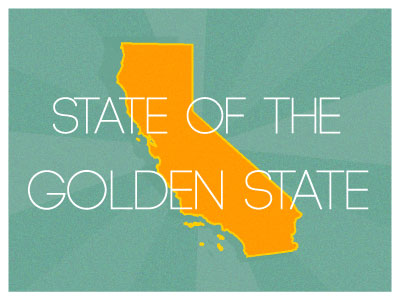Obamacare And California: What You Should Know

Covered California is the state organization created to oversee implementation of the law, and officials recently reported that over 625,000 California citizens have signed up for private healthcare through the Affordable Care Act. California was also the first state to establish, through legislation, the mandated online insurance exchange—but the roll-out effort was tarnished by the crash of Healthcare.gov, the central platform for the ACA, just days after implementation.
For California, it’s especially important to get implementation right. Why? California, the nation’s most populous state, is also home to the greatest number of uninsured Americans.
California also faces the plight of rising healthcare costs. A 2012 California HealthCare Foundation report revealed that health insurance premiums have risen 153.5 percent since the beginning of the decade. In context, that’s five times the state’s rate of inflation over the same ten-year period.
Economically, implementation is showing signs of effectiveness. The ACA relies upon younger people purchasing insurance to meet the latter of the two goals mentioned above: keeping down the cost of care. Why? Because younger people tend to be healthier and the low cost of covering them balances the increased cost of covering older people who enroll with preexisting conditions. Despite the fact that the U.S. population is aging as Baby Boombers retire, 250,000 people, or 25 percent of new sign-ups on the California exchange, are between the ages of 18 and 34. Of that age group, 36 percent are eligible for government subsidies to offset the cost of coverage. Economists project that for costs to stay low, the percentage of 18-34 year-olds receiving coverage needs to be at around 40 percent.
It’s a doable target, given California’s demographics. There are nearly 2 million of these “young invincibles” in California alone and the state has a plan to target them. So far, a live YouTube event and a massive social media blitz have been launched, and the state hopes that the “friends telling friends” effect will ultimately be successful.
Community organizations like "Young Invincibles” have also joined the effort, spreading information to debunk the myth that young people don’t have a desire (or need) for health insurance. The awareness crisis, commonly referred to in discussions of voter apathy among young folks, is also present in the healthcare sector. Many young folks, according to the organization’s director, have never heard of phrases like “co-pay” or “premium.”
A slew of polls have shown conclusively in the organization’s favor, including one Young Invincibles poll that revealed the number of uninsured 18-34 year olds to be as low as five percent. We may be young and invincible, but one thing we are not is young and dumb.
Still, the news hasn’t been all good. When news broke that the implementation of the ACA was facing across the board implementation difficulties, pundits and partisans alike were quick to criticize the government for what they described as another case of government failure to manage a program on the scale of the national healthcare exchange. Though the website implementation has been largely resolved, consumers say they aren’t out of the woods yet.
The problem? Insurance companies.
An LA Times article reports that consumers are receiving such horrendous customer service that they have to pay out-of-pocket for medical care that would normally be covered by their insurance. The Times quoted Alan Sager, a Boston University professor of health policy:
"There's equal opportunity for incompetence by the public and private sector in administering such a large new program," he said. "People are deservedly angry and resentful."
No one should be surprised at such levels of incompetence, at either the government or corporate level. Implementation of the ACA has demonstrated to the public what many policy wonks and bureaucrats already know: unforeseen factors interact in complex ways to produce uncertainty.
Sound like a mouthful? To put it more simply: government policy is hard.
It still shouldn’t deter us from pursuing broad overhauls like the ACA. Politics tends to be overly reactionary, but the results of the 2012 presidential election proved voters were willing to give the ACA another shot. The next few months will be critical for California and the nation, and if anything, state organizations like Covered California are the silver lining: they are demonstrating that underneath the federal policy czars and corporate mess, there are real people trying to create real change, and they are succeeding. Let’s hope voters remember that when they return to the midterm polls in November.
"Obamacare And California" is the inaugural piece in Nathaniel Haas' weekly column "State Of The Golden State." Check back every Wednesday for the latest on California state politics. Reach Nathaniel here; follow him here.



